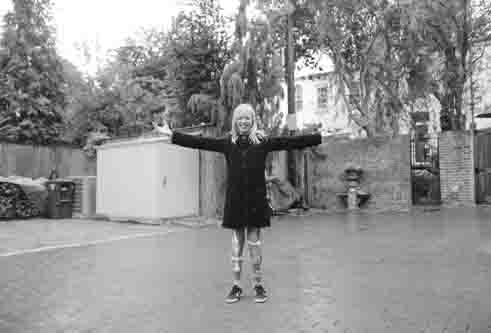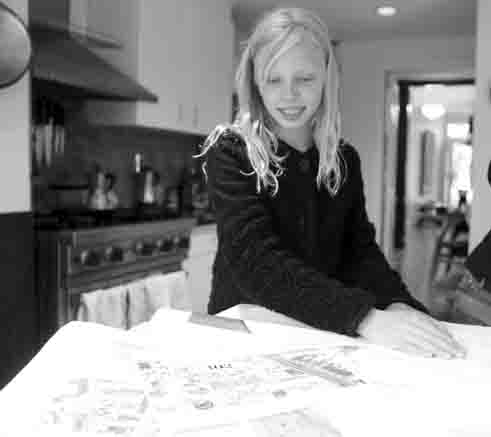Young Georgetowner Aims to Name Alley

By Kat LuceroCurrent Staff Writer
Strange odors, darting vermin, unkempt trash bins and shady activities often give public alleys an unappealing reputation. A quiet rear corridor in the Georgetown Historic District, however, defies this negative perception.
The T-shaped, red-brick alley sits behind the 3200 block of Volta Place, where it abuts the stone-covered, cottage-inspired Georgetown Lutheran Church on Wisconsin Avenue. The alley has a secluded atmosphere, due to having only one point of egress, from the south.
And soon, this alley may adopt a more formal identity. That’s thanks to 12-year-old Raya Kenney, who inspired a D.C. Council bill to name the corridor behind her house, which has served as a play area for neighborhood children.

Two weeks ago Ward 2 Council member Jack Evans introduced the “Cashell Alley Designation Act of 2014,” which would name the space after Hazel B. Cashell, who in 1869 purchased the Volta Place lots and developed row houses there — information the young history buff Kenney uncovered in her thorough research. A hearing is scheduled for Oct. 29.
“At the end of this summer, when my mom and I were cleaning the alley, I realized it didn’t have a name,” she said. “I wanted to name it … to make it sound more homey.”
Next week, Kenney will help present her alley-naming initiative to the Committee of the Whole before the full council votes on the bill. The push coincidentally follows other efforts this year by the Historic Preservation Office of the D.C. Department of Planning to refurbish and formally name historic alleys, as part of a vision to reactivate and enliven them.
Kenney, a homeschooled student involved in several extracurricular activities, initially wanted to name the Georgetown corridor after her cat. But following advice from her mother, the curious tween who recently won a city-sponsored poetry contest searched for a more “historic” moniker.
Then, for guidance maneuvering through the civic proceedings, she contacted Evans’ office and the city’s preservation office. The staff said she had already done a good portion of the legwork when she reached out. Last month, her initiative won support from the Georgetown advisory neighborhood commission, after she made the case at the September meeting.
To start, Kenney went to the Peabody Room, a special collection of neighborhood history at the Georgetown Library, where she found 19th-century maps and real estate documents showing Cashell’s ownership. To confirm that the chosen name would be historically accurate, Kim Williams of the city’s preservation office helped Kenney check her facts.
Although Pierre L’Enfant’s original 18th-century layout for the federal capital included alleyways, the Georgetown neighborhood didn’t develop alleys until after it was integrated with the District in 1871, according to Williams. She’s the author of a citywide alley survey the Planning Office released this year to highlight the extent of these corridors’ “history and cultural landscapes.”
Historically, most of these rear alleys were named after “their owners, residents or activities that took place” in them, according to the “DC Historic Alley Building Survey.” Today, the city recognizes a few of them, such as the historic Blagden Alley/Naylor Court in Shaw and Cady’s Alley in Georgetown.
At the Washingtoniana Division at the city’s main library, Kenney “enthusiastically” looked through construction permits and other documents to confirm that “Cashell Alley” was an appropriate name, said Williams.
“The Cashell family maintained the ownership of the property up until 1923, at which time they subdivided the lots, built the alley and the back of the houses,” Williams said.
Williams said the advancement of this alley-naming proposal in the council is “a great start” in the Planning Office’s overall goals. In the future, she said, “there should be a more strategic systematic approach” in developing alleys into attractive public spaces and giving them names and identities.
This article appears in the Oct. 22 issue of The Georgetown Current newspaper.
